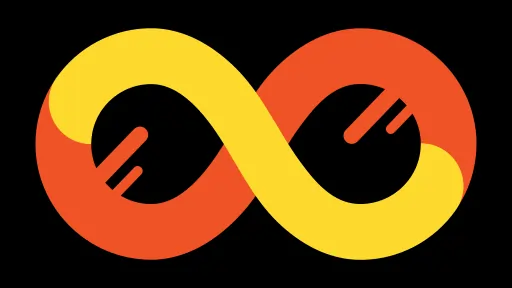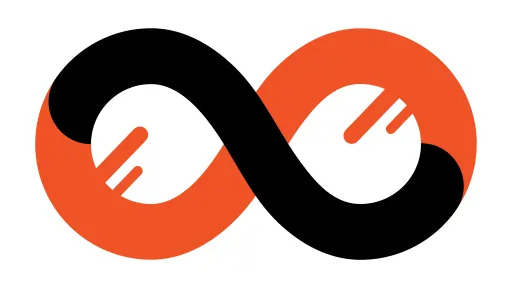The Indian Administrative Service (IAS) stands as one of the most prestigious and influential civil services in India, forming the backbone of the country’s administrative machinery. Established to ensure effective governance, policy implementation, and public service delivery, the IAS attracts thousands of aspirants annually, driven by its reputation, authority, and opportunity to impact millions of lives.
This article delves into the history, structure, roles, recruitment process, challenges, and societal impact of the IAS, offering a detailed perspective on its significance in shaping modern India.
Table of Contents
Historical Evolution of the Indian Administrative Service (IAS)
The IAS traces its origins to the Indian Civil Service (ICS), established during British colonial rule in the 19th century. The ICS was designed to administer the vast and diverse Indian subcontinent, with British and Indian officers managing governance, revenue collection, and law enforcement. Post-independence in 1947, the ICS was transformed into the IAS under the leadership of Sardar Vallabhbhai Patel, India’s first Home Minister, who envisioned a unified administrative service to foster national integration.
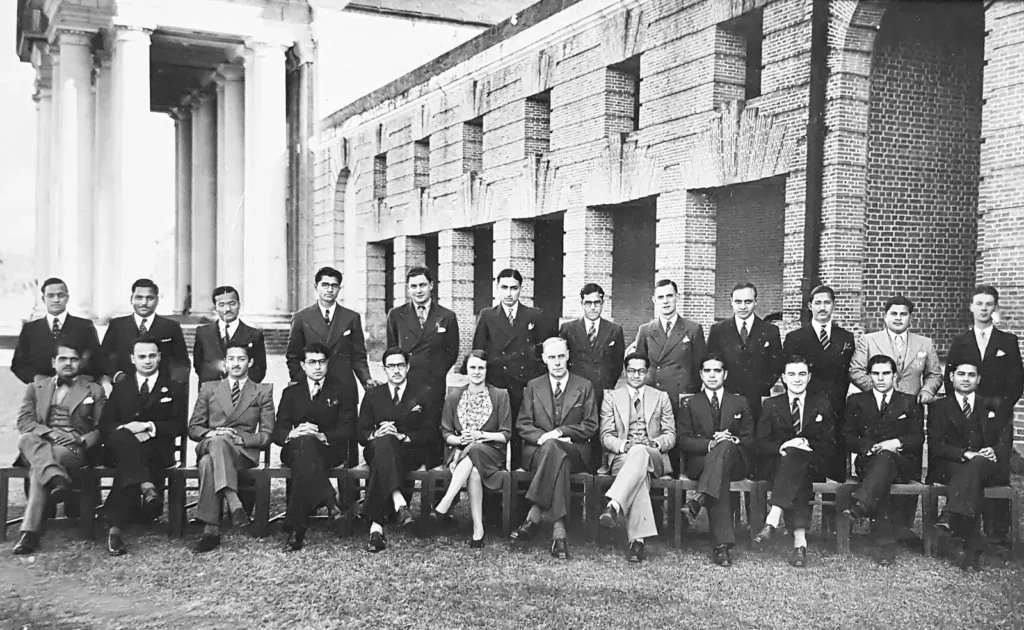
The transition from ICS to IAS marked a shift toward a merit-based, inclusive system, reflecting India’s democratic ethos. The Constitution of India, enacted in 1950, formalized the IAS under Article 312, establishing it as an All India Service alongside the Indian Police Service (IPS) and Indian Forest Service (IFoS). This status ensures that IAS officers serve both the central and state governments, promoting coordination and uniformity in governance across India’s federal structure.
Over the decades, the IAS has evolved to meet the demands of a rapidly developing nation. From managing post-partition challenges to implementing economic reforms in the 1990s and driving digital governance in the 21st century, the service has adapted to India’s socio-economic transformations while retaining its core commitment to public welfare.
Structure and Cadre of the IAS
The IAS operates as a cadre-based service, with officers allocated to specific state or union territory cadres. Each cadre functions under the joint control of the central and state governments, ensuring a balance between national and regional priorities. As of 2025, the IAS comprises approximately 5,500 officers, a relatively small number given India’s population of over 1.4 billion.
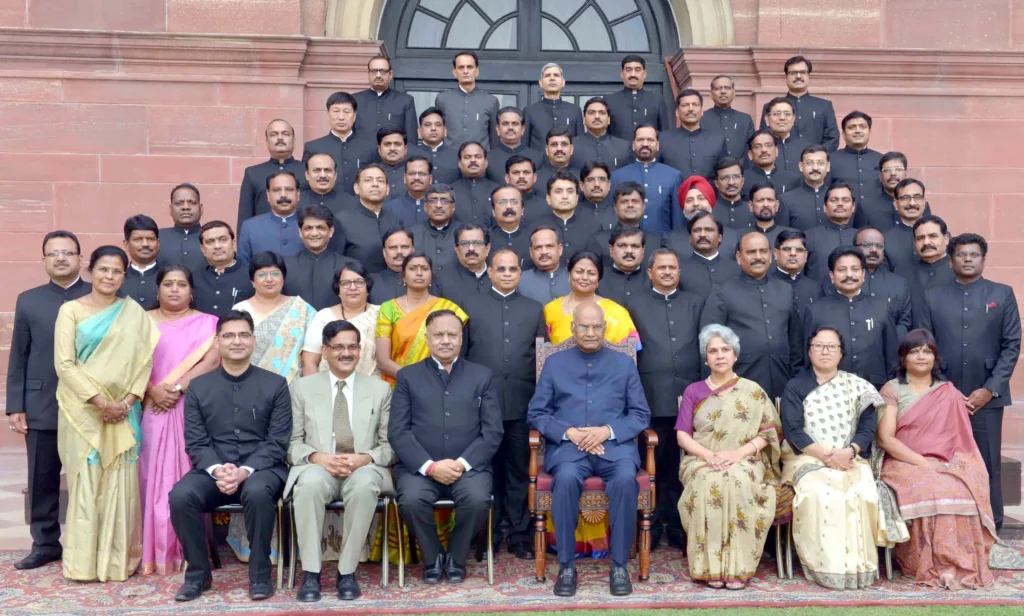
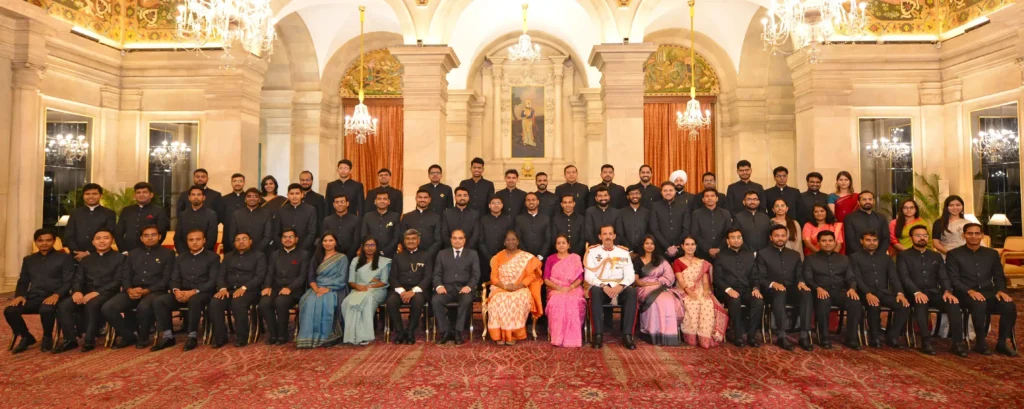
Key Features of the IAS Structure
- Cadre Allocation: Upon selection, IAS officers are assigned to a state cadre or a joint cadre (for smaller states/union territories). Officers typically serve in their allocated cadre but may be deputed to the central government or other states.
- Hierarchy: The IAS follows a well-defined hierarchy, starting from Assistant Collector/Assistant Commissioner at the entry level to Chief Secretary or Cabinet Secretary at the apex. Intermediate roles include District Magistrate, Divisional Commissioner, and Secretary in state or central ministries.
- Tenure and Transfers: IAS officers are subject to frequent transfers, often every 2–3 years, to ensure administrative efficiency and prevent complacency. However, this practice has sparked debates about continuity in governance.
- Diverse Roles: Officers handle a wide range of responsibilities, from district administration to policy formulation, depending on their posting and seniority.
The cadre system fosters a deep understanding of regional issues while enabling officers to contribute to national policymaking. For instance, an IAS officer serving as a District Magistrate in Uttar Pradesh may later work as a Joint Secretary in the Ministry of Finance, bringing grassroots insights to national policy.
Roles and Responsibilities of IAS Officers
IAS officers are often described as the steel frame of India, a term coined by Sardar Patel to highlight their critical role in governance. Their responsibilities span multiple domains, reflecting the complexity of administering a diverse nation.
Key Responsibilities
- Policy Formulation and Implementation: IAS officers design and execute policies at both central and state levels. For example, an officer in the Ministry of Health may contribute to schemes like Ayushman Bharat, while a District Magistrate ensures its effective rollout at the grassroots.
- District Administration: As District Magistrates or Collectors, IAS officers oversee law and order, revenue administration, and development programs in their districts. They coordinate with local governments, police, and other agencies to address issues like poverty, education, and infrastructure.
- Public Service Delivery: Officers ensure the efficient delivery of government services, such as healthcare, education, and welfare schemes. During crises like natural disasters, they lead relief and rehabilitation efforts.
- Liaison Between Center and States: IAS officers bridge the gap between central and state governments, ensuring alignment of policies and resources. This role is vital in India’s federal system, where states have significant autonomy.
- Advisory Role: Senior IAS officers advise ministers and elected representatives on policy matters, providing technical expertise and administrative insights.
Real-World Examples
- T.N. Seshan, a former IAS officer, transformed India’s electoral system as Chief Election Commissioner by introducing measures like voter ID cards and strict monitoring of election expenses.
- Armstrong Pame, an IAS officer from Manipur, built a 100-km road in a remote area through crowdfunding and community participation, earning the title “Miracle Man of Manipur.”
- During the COVID-19 pandemic, IAS officers across India coordinated testing, vaccination drives, and lockdown enforcement, showcasing their crisis management skills.
These examples illustrate the versatility and impact of IAS officers, who often work under intense pressure to deliver results in challenging environments.
Recruitment and Training Process
The journey to becoming an IAS officer is rigorous, involving a highly competitive selection process and comprehensive training. The Union Public Service Commission (UPSC) conducts ˜the Civil Services Examination (CSE) annually to recruit candidates for the IAS, IPS, and other services.
Stages of the Civil Services Examination
- Preliminary Examination: A screening test comprising two objective-type papers: General Studies (GS) and Civil Services Aptitude Test (CSAT). Only about 2–3% of candidates qualify for the next stage.
- Main Examination: A written exam with nine papers, including Essay, General Studies (I–IV), Optional Subject (two papers), and Indian Language and English. The Mains test a candidate’s depth of knowledge and analytical skills.
- Personality Test (Interview): Conducted by a UPSC panel, the interview assesses a candidate’s suitability for a career in public service, focusing on personality, communication, and decision-making skills.
In 2024, over 1.2 million candidates applied for the CSE, but only about 1,000 were selected, reflecting an acceptance rate of less than 0.1%. The exam’s difficulty, coupled with its broad syllabus, makes it one of the toughest in the world.
Training at LBSNAA
Successful candidates undergo training at the Lal Bahadur Shastri National Academy of Administration (LBSNAA) in Mussoorie. The training program, lasting about two years, includes:
- Foundation Course: A 3–4 month program for all civil services recruits, focusing on ethics, leadership, and inter-service camaraderie.
- Phase I: Specialized training for IAS probationers, covering public administration, law, and governance.
- Bharat Darshan: A study tour across India to expose trainees to the country’s diversity and challenges.
- District Training: A year-long stint in a district, where trainees work under senior officers to gain practical experience.
- Phase II: A final phase at LBSNAA to consolidate learning and prepare for postings.
The training emphasizes ethical governance, empathy, and decision-making, equipping officers to handle the complexities of administration.
Challenges Faced by IAS Officers
Despite its prestige, the IAS is not without challenges. Officers operate in a dynamic environment marked by political, social, and bureaucratic complexities.
Major Challenges
- Political Interference: IAS officers often face pressure from elected representatives to align administrative decisions with political agendas, which can compromise neutrality. For instance, frequent transfers of officers in some states are attributed to political motivations.
- Bureaucratic Red Tape: The slow pace of decision-making and excessive paperwork can hinder efficient governance, frustrating officers committed to reform.
- Public Expectations: Officers are expected to address diverse issues, from poverty to infrastructure, often with limited resources. Failure to meet expectations can lead to public criticism.
- Work-Life Balance: The demanding nature of the job, with long hours and frequent transfers, affects officers’ personal lives. Rural postings, in particular, can be isolating.
- Corruption and Ethical Dilemmas: While most officers uphold integrity, some face temptations or systemic pressures to engage in corrupt practices, testing their moral compass.
Addressing Challenges
To mitigate these issues, reforms like fixed tenures, e-governance initiatives, and ethics training have been introduced. Officers also rely on mentorship and peer networks to navigate challenges. For example, the Good Governance Index, launched by the Government of India, encourages states to adopt transparent and efficient administrative practices, indirectly supporting IAS officers.
Societal Impact of the IAS
The IAS plays a pivotal role in shaping India’s socio-economic landscape. By driving policy implementation and grassroots development, officers contribute to national progress in multiple ways.
Key Contributions
- Poverty Alleviation: IAS officers oversee schemes like MGNREGA and PM Awas Yojana, which provide employment and housing to millions.
- Education and Health: Initiatives like Sarva Shiksha Abhiyan and National Health Mission rely on IAS officers for effective execution at the district and state levels.
- Digital Transformation: Officers have been instrumental in promoting Digital India, ensuring access to online services, and improving governance transparency.
- Crisis Management: From managing floods to coordinating pandemic responses, IAS officers lead efforts to protect lives and livelihoods.
Case Studies
- Swachh Bharat Mission: IAS officers across districts mobilized communities to achieve open-defecation-free status, significantly improving sanitation. For example, Anu Kumari, an IAS officer in Bihar, led innovative campaigns to promote toilet construction.
- Smart Cities Mission: Officers in cities like Indore and Surat have driven urban transformation, making these cities models of cleanliness and infrastructure development.
These contributions highlight the IAS’s role as a catalyst for change, bridging the gap between policy and people.
Criticisms and Reforms
While the IAS is lauded for its contributions, it faces criticism for certain systemic issues. Critics argue that the service can be elitist, slow to adapt, and overly bureaucratic. The Second Administrative Reforms Commission (ARC) (2005–2009) made several recommendations to modernize the IAS, some of which have been implemented.
Common Criticisms
- Lack of Specialization: Unlike domain-specific services, IAS officers are generalists, which can limit their expertise in technical areas like technology or finance.
- Resistance to Change: The hierarchical structure and traditional practices can hinder innovation, especially in rapidly evolving sectors.
- Urban Bias: Critics note that IAS officers, often from urban backgrounds, may struggle to understand rural challenges, affecting policy implementation.
Proposed Reforms
- Lateral Entry: The government has introduced lateral entry at senior levels to bring domain experts into the IAS, fostering specialization. For example, professionals from the private sector have been appointed as Joint Secretaries in ministries like Finance and Commerce.
- Performance-Based Promotions: Linking promotions to measurable outcomes, rather than seniority alone, could enhance accountability.
- Continuous Training: Expanding mid-career training programs to include emerging areas like artificial intelligence and climate change would equip officers for modern challenges.
- Citizen-Centric Approach: Encouraging participatory governance, where officers actively involve citizens in decision-making, could improve public trust.
The government’s Mission Karmayogi, launched in 2020, aims to transform the IAS into a more skill-driven, citizen-centric service through continuous learning and capacity building.
The IAS in the 21st Century: Opportunities and Future Outlook
As India aspires to become a $5 trillion economy and a global leader, the IAS faces new opportunities and expectations. The rise of technology, climate change, and urbanization presents both challenges and avenues for innovation.
Emerging Opportunities
- Technology Integration: IAS officers are leveraging artificial intelligence, big data, and blockchain to enhance governance. For instance, Aadhaar-based service delivery has streamlined welfare distribution.
- Sustainable Development: Officers are at the forefront of implementing India’s Net Zero by 2070 commitment, promoting renewable energy and green policies.
- Global Engagement: With India’s growing international stature, IAS officers represent the country in global forums, negotiating trade agreements and climate accords.
Future Outlook
The IAS must evolve to remain relevant in a rapidly changing world. Embracing data-driven decision-making, fostering inclusivity, and prioritizing sustainability will be critical. The service’s ability to attract and retain talent will also depend on addressing issues like work-life balance and political interference.
Young IAS officers like Athar Aamir Khan, who transformed Srinagar’s urban infrastructure, and Jitendra Yadav, who promoted organic farming in Sikkim, exemplify the potential of a modern, dynamic IAS. Their work underscores the service’s capacity to drive innovation while staying rooted in public service.
Conclusion
The Indian Administrative Service remains a cornerstone of India’s governance, embodying the principles of integrity, neutrality, and public welfare. From its colonial origins to its modern avatar, the IAS has navigated complex challenges to serve a diverse nation. While it faces criticisms and hurdles, its contributions to poverty alleviation, education, health, and digital governance are undeniable.
For aspirants, the IAS offers a unique opportunity to shape India’s future, albeit through a demanding journey of preparation and service. For society, it represents a bridge between government and citizens, ensuring that policies translate into tangible outcomes. As India marches toward a new era of growth and global influence, the IAS will continue to play a pivotal role, adapting to new realities while upholding its legacy as the steel frame of India.
Acknowledgements
The creation of the article “The Indian Administrative Service (IAS): A Comprehensive Exploration” was made possible through the wealth of information provided by numerous reputable sources.
The Examsmeta truly expresses its gratitude to the following websites for their comprehensive data, insights, and updates on the Indian Administrative Service, which significantly enriched the content and depth of this article. Their contributions, ranging from historical context to current developments, were instrumental in crafting a detailed and well-rounded exploration of the IAS.
Acknowledged Sources
- Wikipedia: Provided foundational information on the structure, history, and criticisms of the IAS, offering a broad overview of the service.
- Union Public Service Commission: Offered detailed insights into the Civil Services Examination process and recruitment procedures.
- Government of India: Served as a primary source for official information on IAS roles, cadre allocation, and governance frameworks.
- The Hindu: Contributed recent news and updates, including developments like the Puja Khedkar case, enhancing the article’s contemporary relevance.
- Hindustan Times: Provided news articles and analyses on IAS officers’ contributions and administrative challenges.
- The Indian Express: Offered in-depth reports on IAS reforms and their societal impact, enriching the discussion on governance.
- Business Standard: Supplied updates on bureaucratic reshuffles and policy changes affecting the IAS.
- Economic Times: Contributed insights into recent appointments and the evolving role of IAS officers in public administration.
- LiveMint: Provided perspectives on administrative reforms and innovative governance practices by IAS officers.
- Carnegie Endowment for International Peace: Offered analytical insights into IAS recruitment, performance, and reform needs.
- Vivekananda International Foundation: Contributed historical and philosophical perspectives on the evolution of the IAS from the ICS.
- The Geostrata: Highlighted modern challenges and criticisms faced by the IAS, adding a critical dimension to the article.
- Byju’s: Provided educational content on the All India Services, clarifying the IAS’s role within India’s federal structure.
- Tripura State Portal: Offered specific details on IAS cadre postings, illustrating state-level administrative roles.
These sources collectively ensured the article’s accuracy, comprehensiveness, and relevance, reflecting the multifaceted nature of the Indian Administrative Service.
Related Articles
- UPSC Civil Services Examination 2024: Exam Pattern and Syllabus
- Civil Services Examination (CSE) 2025: Exam Pattern, Syllabus, & Preparation
- UPSC Exam Pattern 2025 and Syllabus: A Comprehensive Guide for Aspirants
- UPSC CSE 2026: Exam Pattern and Syllabus of Civil Services Examination
- Mastering the UPSC Prelims: A Comprehensive Guide for Aspirants
- UPSC Mains: A Comprehensive Guide to Structure, Syllabus, & Preparation
- Mastering the UPSC Personality Test: A Comprehensive Guide
- The Indian Administrative Service (IAS): A Comprehensive Exploration
- The Indian Police Service (IPS): A Comprehensive Overview
- The Indian Foreign Service (IFS): A Comprehensive Analysis
- Indian Forest Service (IFoS): A Comprehensive Overview
- Indian Revenue Service (IRS): A Comprehensive Overview
- Indian Defence Estates Service (IDES): A Comprehensive Overview
- Indian Forest Service: Guardians of India’s Natural Heritage
- LBSNAA: Lal Bahadur Shastri National Academy of Administration
- SVPNPA: Sardar Vallabhbhai Patel National Police Academy
- SSIFS | Sushma Swaraj Institute of Foreign Service: Shaping India’s Diplomatic Future
- NADT | National Academy of Direct Taxes: Shaping India’s Tax Administration Excellence
- NACIN | National Academy of Customs, Indirect Taxes and Narcotics: A Detailed Overview
- Lal Bahadur Shastri: The Humble Architect of Modern India
- Sardar Vallabhbhai Patel: The Iron Man of India and Architect of a United India
- Sushma Swaraj: A Trailblazing Leader in Indian Politics
- The Constitution of India: A Comprehensive Exploration
FAQs on the Indian Administrative Service (IAS)
FAQ 1: What is the Indian Administrative Service (IAS), and its significance in India?
The Indian Administrative Service (IAS) is one of India’s premier civil services, often referred to as the steel frame of India due to its pivotal role in governance. Established under Article 312 of the Constitution of India, the IAS is an All India Service, alongside the Indian Police Service (IPS) and Indian Forest Service (IFoS), designed to ensure effective administration across the country’s federal structure. IAS officers serve both central and state governments, bridging national and regional priorities to deliver public services and implement policies.
The significance of the IAS lies in its versatility and authority. Officers handle diverse responsibilities, from managing districts as District Magistrates to shaping national policies as Secretaries in ministries. For example, during the COVID-19 pandemic, IAS officers coordinated vaccination drives and lockdown measures, showcasing their crisis management skills. Their ability to influence millions of lives through initiatives like Swachh Bharat Mission or Digital India underscores their critical role in India’s development. The IAS’s merit-based recruitment and rigorous training ensure that only highly capable individuals uphold this responsibility, making it a cornerstone of India’s governance.
FAQ 2: How did the IAS evolve from its historical roots?
The IAS traces its origins to the Indian Civil Service (ICS), established during British colonial rule to administer the Indian subcontinent. The ICS was primarily staffed by British officers, with a few Indians later admitted through competitive exams. Post-independence in 1947, the ICS was transformed into the IAS under the guidance of Sardar Vallabhbhai Patel, India’s first Home Minister, who envisioned a unified service to foster national integration.
The transition marked a shift toward a democratic, inclusive system. The Constitution of India formalized the IAS as an All India Service, ensuring officers serve both the central and state governments. Over time, the IAS adapted to India’s evolving needs, from managing post-partition challenges to driving economic reforms in the 1990s and promoting digital governance in the 21st century. For instance, officers like T.N. Seshan, who revolutionized India’s electoral system, exemplify how the IAS has shaped modern India while retaining its commitment to public welfare.
FAQ 3: What is the structure and cadre system of the IAS?
The IAS operates as a cadre-based service, with officers allocated to specific state or union territory cadres. Each cadre is jointly controlled by the central and state governments, balancing national and regional priorities. As of 2025, the IAS comprises approximately 5,500 officers, a small number relative to India’s 1.4 billion population.
Key features of the IAS structure include:
- Cadre Allocation: Officers are assigned to a state or joint cadre, serving primarily in that region but may be deputed elsewhere.
- Hierarchy: The hierarchy ranges from Assistant Collector to Chief Secretary or Cabinet Secretary, with roles like District Magistrate and Divisional Commissioner in between.
- Transfers: Officers face frequent transfers, typically every 2–3 years, to maintain efficiency, but sometimes disrupting continuity.
- Diverse Roles: Officers manage district administration, policy formulation, and more, depending on their posting.
For example, an IAS officer in Tamil Nadu may serve as a District Collector before moving to a central ministry role, bringing regional insights to national policymaking.
FAQ 4: What are the primary roles and responsibilities of IAS officers?
IAS officers are tasked with a wide array of responsibilities, reflecting their role as the backbone of India’s administration. They are instrumental in policy formulation, public service delivery, and crisis management, operating at both grassroots and national levels.
Key responsibilities include:
- Policy Formulation: Officers design and implement policies, such as Ayushman Bharat, ensuring alignment between central and state objectives.
- District Administration: As District Magistrates, they oversee law and order, revenue collection, and development programs.
- Public Service Delivery: They ensure access to healthcare, education, and welfare schemes, especially during crises like floods or pandemics.
- Federal Coordination: Officers act as a bridge between central and state governments, ensuring cohesive governance.
- Advisory Role: Senior officers advise ministers on policy, providing technical expertise.
For instance, Armstrong Pame, an IAS officer, built a 100-km road in Manipur through community efforts, showcasing the impact of grassroots leadership.
FAQ 5: How are IAS officers recruited and trained?
Recruitment to the IAS is through the Civil Services Examination (CSE), conducted annually by the Union Public Service Commission (UPSC). The CSE is one of the world’s toughest exams, with over 1.2 million applicants in 2024, but only about 1,000 selected.
The selection process includes:
- Preliminary Examination: Two objective papers (General Studies and CSAT) to screen candidates.
- Main Examination: Nine written papers, including Essay, General Studies, and Optional Subject, testing analytical skills.
- Personality Test: An interview assessing communication and decision-making abilities.
Successful candidates undergo training at the Lal Bahadur Shastri National Academy of Administration (LBSNAA) in Mussoorie. The two-year program includes a Foundation Course, Bharat Darshan tour, district training, and specialized modules on governance and ethics. This rigorous training equips officers to handle complex administrative challenges, as seen in the work of young officers like Athar Aamir Khan, who transformed Srinagar’s infrastructure.
FAQ 6: What challenges do IAS officers face in their roles?
IAS officers operate in a complex environment, facing numerous challenges that test their resilience and integrity. These include political pressures, bureaucratic inefficiencies, and public expectations.
Major challenges are:
- Political Interference: Officers often face pressure to align with political agendas, risking their neutrality.
- Bureaucratic Red Tape: Slow decision-making and excessive paperwork hinder efficiency.
- Public Expectations: Officers must address diverse issues with limited resources, facing criticism if expectations are unmet.
- Work-Life Balance: Frequent transfers and long hours, especially in rural postings, affect personal lives.
- Ethical Dilemmas: Systemic pressures may tempt officers to compromise integrity.
Reforms like e-governance and fixed tenures aim to address these issues. For example, the Good Governance Index encourages transparent practices, supporting officers in maintaining efficiency.
FAQ 7: How does the IAS contribute to India’s socio-economic development?
The IAS plays a transformative role in India’s socio-economic progress by implementing policies and driving development at the grassroots level. Officers are central to initiatives addressing poverty, education, health, and digital transformation.
Key contributions include:
- Poverty Alleviation: Officers oversee schemes like MGNREGA, providing employment to millions.
- Education and Health: Programs like Sarva Shiksha Abhiyan and National Health Mission rely on IAS leadership.
- Digital Transformation: Officers promote Digital India, enhancing service delivery through technology.
- Crisis Management: They lead relief efforts during natural disasters or pandemics.
For example, Anu Kumari in Bihar advanced the Swachh Bharat Mission by promoting sanitation, while officers in Indore drove the Smart Cities Mission, making it a model city.
FAQ 8: What are the criticisms faced by the IAS, and how are they addressed?
The IAS faces criticism for being elitist, bureaucratic, and slow to adapt. Critics argue that its generalist nature and traditional practices hinder innovation in specialized fields.
Common criticisms include:
- Lack of Specialization: Officers may lack expertise in technical areas like technology.
- Resistance to Change: Hierarchical structures can impede modernization.
- Urban Bias: Urban-background officers may struggle with rural challenges.
Reforms to address these include:
- Lateral Entry: Domain experts are appointed to senior roles, enhancing specialization.
- Performance-Based Promotions: Linking career progression to outcomes improves accountability.
- Continuous Training: Programs like Mission Karmayogi focus on skill development.
- Citizen-Centric Governance: Encouraging public participation builds trust.
These reforms aim to modernize the IAS, ensuring it meets 21st-century challenges.
FAQ 9: What opportunities does the IAS offer in the modern era?
As India aims to become a $5 trillion economy, the IAS faces new opportunities driven by technology, sustainability, and global engagement. Officers are at the forefront of transformative initiatives.
Emerging opportunities include:
- Technology Integration: Leveraging artificial intelligence and big data for governance, as seen in Aadhaar-based services.
- Sustainable Development: Implementing India’s Net Zero by 2070 goal through green policies.
- Global Engagement: Representing India in international forums on trade and climate.
For instance, officers promoting renewable energy or negotiating global accords showcase the IAS’s evolving role. Young officers like Jitendra Yadav, who advanced organic farming in Sikkim, highlight the potential for innovation.
FAQ 10: What is the future outlook for the IAS?
The IAS must evolve to remain relevant in a rapidly changing world, balancing tradition with modernization. Its future depends on embracing data-driven decision-making, inclusivity, and sustainability while addressing challenges like political interference.
Key focus areas for the future include:
- Skill Development: Expanding training in emerging fields like climate change and artificial intelligence.
- Inclusivity: Attracting diverse talent to reflect India’s demographic diversity.
- Public Trust: Strengthening citizen engagement to enhance governance transparency.
The success of officers like Athar Aamir Khan, who modernized Srinagar, suggests a dynamic future for the IAS. By adapting to new realities, the service will continue to serve as India’s steel frame, driving progress and public welfare.
